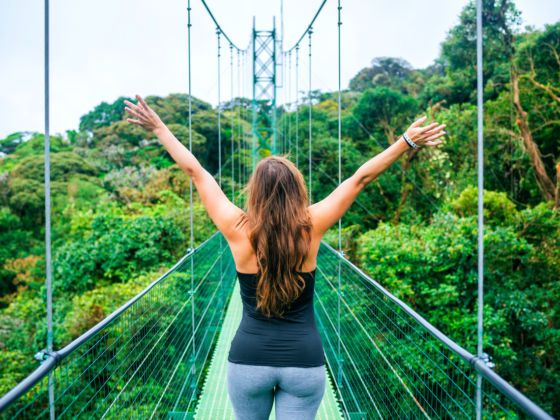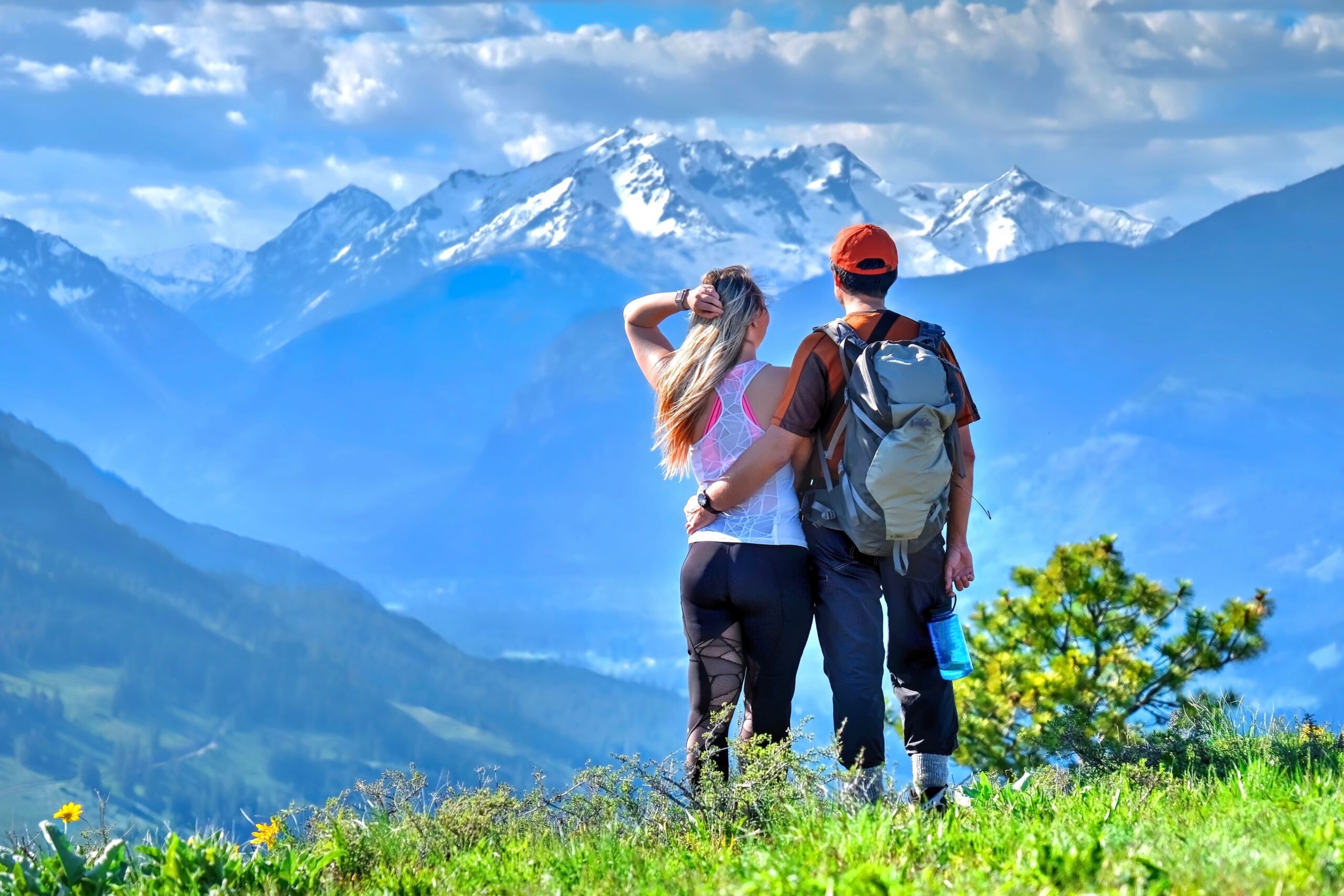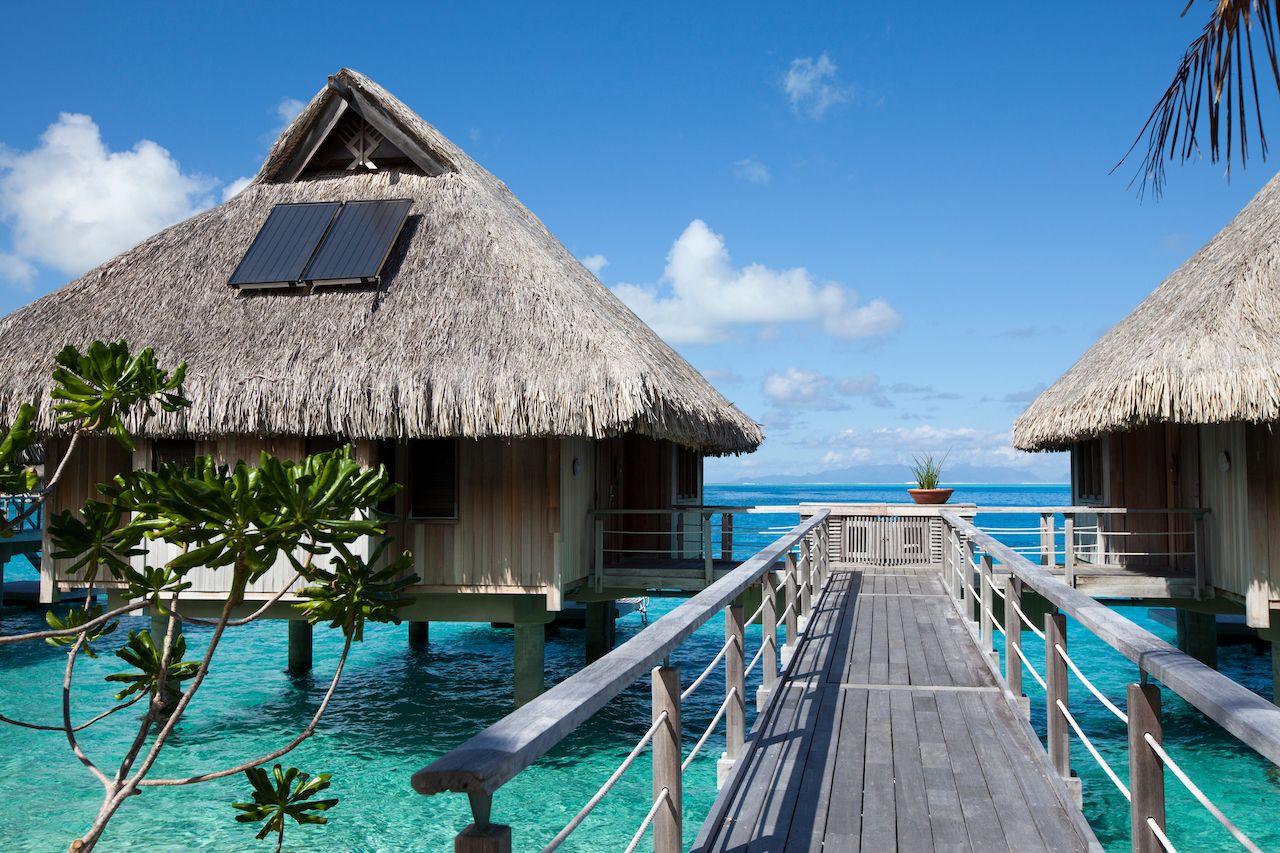Next month, top delegates from around the world will convene in Glasgow, Scotland for the annual UN Climate Change Conference, also known as COP26, to discuss what actions can be taken at the government and policy level to prevent the worst impacts of climate change. While we certainly hope for a positive outcome, it can feel frustrating waiting for these older (mostly male, mostly white) so-and-sos to make the decisions that will impact so many lives. Luckily, a lot can be done at the individual level to empower us toward a greener future, and that includes evolving our approach to travel. As the world waited in lockdown, dreaming of once again exploring distant shores, innovations in the travel industry emerged to make planning sustainable travel much more accessible.

The Best New Services for Planning a More Sustainable Trip in 2022
We spoke to today’s leading experts in eco and ethical travel to learn which new tools and resources they’ll be using to plan their trips in 2022, here are some of their tips.
- Defining sustainable travel
- The best resources for choosing a sustainable destination
- Sites for sourcing more sustainable transportation
- The best online tools for vetting sustainable hotels
- The best apps for booking local tours and experiences
- How to book more sustainable restaurants on the road
Defining sustainable travel
Before diving in, it’s important to understand a more holistic definition of sustainable travel. “Mainstream media tends to focus on the environmental components of sustainability, but a holistic definition also encompasses social and economic benefits,” explains Kelley Louise, Founder and Executive Director of Impact Travel Alliance, a non-profit committed to helping people protect locals and the earth through travel. The company is currently working on a new platform to foster a global community of sustainable travelers. For now, you can join their Facebook group to mingle with other travelers and destination locals who will help you plan a more impactful travel experience.
Sustainable travel about looking at the bigger picture by understanding the smaller details that encompass life for people and wildlife in a given destination, explains Louise. “When you do that, it becomes clear how things like race, diversity, cultural preservation and local economic empowerment are all connected to improving our environment. The exciting part is that, in approaching travel planning through this lens, you’ll also be rewarded with more unique, immersive experiences.”
David Leventhal, the co-founder of Regenerative Travel, agrees with Louise. Referencing Project Drawdown, a leading resource for climate change solutions, Leventhal points out that, while things like carbon offsets get a lot of press, there are many more impactful decisions we can make about the places we stay, the food we eat, and the waste streams we contribute to when traveling. “The key here is to understand your overall impact,” he says. ”Every decision has the potential to be more positive for people, the planet and you personally.”
As a general guide to decision-making, you can reference climate expert Paul Hawken’s recent book and website, Regeneration, in which he outlines several questions to ask yourself before making a decision, things like ‘Does this action restore land or degrade it? Reduce poverty or expand it? Provide workers with dignity or demean them? And, in general, is the activity extractive or regenerative?
Understanding that sustainable travel starts with better decision-making, we’ve outlined the top sustainable travel planning tools according to the timeline of decisions we make when planning travel, beginning with selecting where it is we want to go.
The best resources for choosing a sustainable destination

Photo: Marina Poushkina/Shutterstock
Sustainable travel experts agree that, when choosing a destination, the first thing to do is avoid places that have historically suffered from overtourism. We all saw how nature was able to rebound in US National Parks without the constant crowds passing through. As travel begins to return toward pre-pandemic levels, individuals can help mitigate the worst impacts of overtourism by opting for lesser-known destinations — like a visit to one of the American Midwest’s most European towns, or a secret spot for the country’s best mushroom foraging. If you’re dead-set on getting that iconic Instagram shot Yosemite or planning a bachelorette party to Miami, go for an off-peak season date to avoid the crowds.
For some help in destination selection, Louise recommends soon-to-launch start-up, Fora, which will offer travelers in 2022 a marketplace of advisors to choose from who will work with you one-on-one to book a sustainably-focused trip. The company has a core focus on promoting women’s empowerment and economic independence.
Travelers can also consider visiting a place that has a formal geotourism program. According to the Center for Responsible Travel (CREST), geotourism is defined as “tourism that sustains or enhances the geographical character of a place – its environment, culture, aesthetics, heritage, and the well-being of its residents.” These destinations have MapGuides made by National Geographic Maps that help connect travelers with localized experiences. Apart from this, CREST has helped to establish destination-wide give-back programs in Cape Cod, Monteverde, Costa Rica, and Grenada, West Indies. A visit to CREST’s impact tourism page will connect travelers with companies all over the world that have established community and environmental support programs.
Finally, travelers can reference the United States Travel Care Code while planning, which provides people with simple guidelines on how they can reduce the impact of their travel on the environment.
Sites for sourcing more sustainable transportation

Photo: simona pilolla 2/Shutterstock
By now, we all understand the connection between CO2 emissions and rising global temperatures, which is why Costas Chris, co-founder of Preferred Hotel Group’s new Beyond Green brand, encourages travelers to “walk, bike, take a bus, train and, only where needed, a plane,” adding that travelers should choose non-stop flights when possible, to avoid the heavy use of jet fuel for landings and take off.
Spinlister is a peer-to-peer bike-sharing app for those favoring a bike-tour of their destination. Using public transportation is another great way to quickly feel like a local and get an authentic, city experience. Our experts recommend CityMapper for determining the best way to get from point A to B. Alternatively, Google Maps recently rolled out a new update for US users that will automatically show users the most eco-friendly car route available. The platform also shows users public transport options, biking paths and walking routes.
When it comes to air travel, unfortunately, we’re a long way off from having a carbon-free option, which is why carbon-offsets have become popular with eco-conscious travelers. “Tomorrow’s Air is a subscription-based service I use to invest in permanent carbon storage (helping to remove carbon from the earth’s atmosphere),” says Louise. “In addition, the Carbn app makes it easy to calculate your carbon footprint and then offset your carbon with vetted and verified programs.”
Louise also recommends Skyscanner’s greener choices label. “It’s the best option I’ve seen in terms of transparency for greener flights, and the label makes it easy to spot and book which flights are the most environmentally friendly.”
The best online tools for vetting sustainable hotels

Photo: KKulikov/Shutterstock
Perhaps the area that’s seen the most innovation in past years is that of finding greener accommodations. Previously an epidemic of greenwashing in the hospitality industry made it hard to determine whether a hotel or resort was truly eco-friendly. Now, stricter accreditation practices and broader understandings of triple bottom lines — people, planet and profit — are helping people choose accommodations that truly have a positive impact on their destination.
Perhaps at the top of this list is Regenerative Travel’s directory of regenerative resorts. Going beyond “sustaining” a destination’s ecosystem, regenerative resorts are actually helping to re-grow wildlife, economies and individual opportunities for locals. Travelers can learn about the impact of their resort directly from the website. Founder David Leventhal also refers travelers to B-Corp’s tourism and hospitality directory. Achieving B-Corp certification is a rigorous process, and one that gets even more strict every year, so travelers can be assured that hotels and resorts with this label are meeting the highest and most current standards in eco-conscious hospitality. Alternatively, Green Globe is another globally recognized standard in sustainable hospitality, with a robust directory of verified hotels and resorts to select from.
The aforementioned and newly-launched Beyond Green platform from Preferred Hotel Group is another great option for sourcing more sustainable accommodations, with many properties in its directory overlapping that of Regenerative Travel. To date, Beyond Green members have restored more than a million acres of formerly degraded habitat into thriving ecosystems that are now protecting endangered species on land and sea. “It is all about impact,” says co-founder Costas Christ. “At Beyond Green, we have a very robust and challenging membership vetting process. We believe in walking our talk.”
While not all of its hotels achieve the highest standards of eco-hospitality, Kind Traveler is still a great way for travelers to make a positive impact on their destination. The award-winning platform is the world’s first socially-conscious, Give-and-Get hotel booking and education platform that empowers travelers to positively impact local communities and the environment in the destinations they visit. Travelers unlock special rates and perks when they give a $10 nightly donation to a locally vetted charity that positively impacts the visiting destination. The site also makes it easy for travelers to understand their hotel’s various green initiatives, as well as how it supports guest wellness and the health of its local community.
The best apps for booking local tours and experiences

Photo: AnnaTamila/Shutterstock
Now that flight and hotel are taken care of, it’s time to map out a greener itinerary. “When it comes to planning sustainable travel, so much of it comes down to asking “where will my money go?” says Louise. “If you see that your tourism dollars will stay in the local economy and support local jobs (or even community programs and nonprofits), that’s a great place to start. But also take the time to research the company and see what values they operate under. Do they talk about their mission to be more sustainable on their website? Are they transparent about their goals? And, last but not least, think about the experience that the company is offering. Does it feel empowering to local people and the local culture? Does it preserve and protect the environment and wildlife? Looking for answers to these questions will help guide your planning so that your travel experiences align with your values.
When in doubt, shop local. Some favorite resources from our experts include I Like Local, a website that connects travelers to locally-led tours and activities, VAWAA, which offers mini-apprenticeships with a master artist in cities around the world and Airbnb Experiences, where you can find a wide range of unique activities led by local experts who love their city.
How to book more sustainable restaurants on the road

Photo: lavizzara/Shutterstock
For food experiences, try EatWith, an Airbnb-style, meal booking platform where locals invite travelers into their homes for a family-style dinner or cooking class. And keep in mind that, if you’ve done the extra work to book a certified sustainable or regenerative hotel, the on-site dining options at your accommodation are also likely to meet those same standards. For instance, not only do Beyond Green members adhere to sustainable sourcing and local foods at their property restaurants, many also have on-site organic gardens from which they will source many ingredients. For instance, The Ranch at Laguna Beach not only sources its menu items from California’s local farming community, they also partner with local restaurants in the area that share their philosophy of sustainable dining and arrange for guests to experience the best local, and values-aligned, eateries.
Finally, sites like OpenTable now have maps of Zero Foodprint and Eco-Friendly restaurants across the US, as does ocean-conservation organization Surfrider.
Of course, there’s also the analog option. “When I travel, I spend time asking locals ‘where would you go?’” explains Leventhal. “I back this question up with my taste for local, locally-sourced, farm-to-table, etc…My kids used to get embarrassed when I’d ask waiters, chefs, hostesses this question, but not anymore. I find that people who work in the food business generally know the types of places I am looking for. So I ask my waiter ‘where would you go tonight if you weren’t working?’ You develop great relationships with locals through these conversations and feel more connected to a place.”
When it comes to sustainable travel, there really isn’t a one-size-fits-all, which is why having these resources, directories and apps available just one click away is so helpful. “As you learn more about sustainability, take baby steps,” offers Louise, understanding how intimidating it can feel when you try to do everything perfectly. Instead, she encourages travelers to look for opportunities to have a positive impact. Rules can feel overwhelming, but when approached from a perspective of wanting a real connection with your destination, the result is an adventure that feels uplifting, immersive, positive and, most importantly, creates memories to last a lifetime.